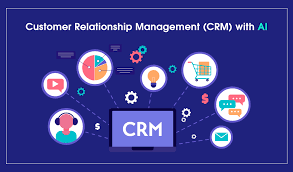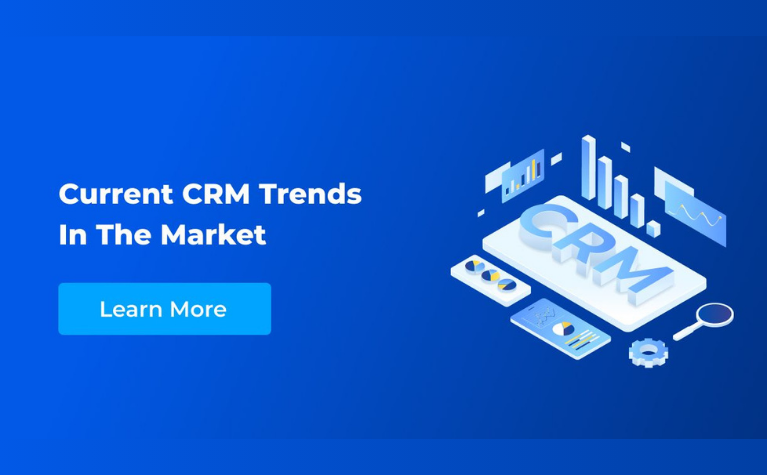There are two undeniable truths CEOs are dealing with in today’s digital-first economy:
Data is your most precious property — if you work with it. That’s because every exchange with a customer — site visit, every ticket, every tweet — is an opportunity to learn something. Disregard these data, and you lose to the competition that uses it.
Vendors will offer you the moon. Every CRM system promises to be the “ultimate solution,” however, without a defined strategy, even the best tools become expensive shelfware.
Technology is important, but a CRM is only as good as the strategy it supports. Too many organisations jump into software selection without being clear about what they want from the technology, which results in wasted money and minimal usage.
This guide parks the distractions, and delivers CEO’s an approachable, structured, and action-packed strategy for making CRM work—whether you’re scaling a startup, tweaking an enterprise, or running a charity.
What Exactly Is a CRM – And Why Does It Matter?
At the core, a CRM (a customer relationship management system) is your company’s brain for all your customer relationships. It’s so much more than software – it’s a strategic methodology that marries technology, processes and data to rewire how you connect with and interpret your audience.
The True Power of a CRM
When implemented effectively, a CRM solution provides:
1. 360° Customer Intelligence Engine
Your CRM is the intelligence hub of your customer data, recording every interaction over email, calls, support tickets, and social, and creating a unified profile for each customer. It tracks what was bought, what is preferred, and how customers behave, and generates a 360° vision of every customer relationship.
It reveals buying signals, service requests, and expansion signals across all touchpoints for you to analyse. This intelligence powers personalised experiences, predicts customer needs and assists teams in making timely, relevant engagements. Raw data is transformed into actionable intelligence so that businesses can strengthen relationships and enhance retention among customers in the most data-driven manner possible, at every touchpoint.
2. Drives Strategic Decision Making
It’s when CRM is more than a way to manage contacts and doubles as a source of strategic knowledge. By showing which customer segments create the most value, it allows leaders to focus on where it counts most. It even highlights areas of weakness in customer relationships, so you can act and always prevent churn.
More importantly, it uncovers what’s not obvious and reveals hidden claims to revenue growth by analysing behaviours, feedback, and engagement rules all along the customer journey. Armed with this at your fingertips, your business can move from reactive to proactive, to make informed decisions that will lead to long-term success and sustainable business growth right across your business.
3. Personalised Engagement at Scale
With a CRM, businesses are given the means to provide personalised experiences at scale. It uses customer data and behaviours to automate relevant, personal, perfectly-timed communications. By analysing purchase behaviour, service interactions, and engagement history, it predicts needs and provokes proactive outreach, often before customers even recognise the need.
Advanced segmentation makes sure every message is received by the right person, with content tailored to their interest and life stage. This smart automation goes beyond basic chatbot design, helping businesses keep a human touch at scale, build better relationships and deliver better marketing and customer satisfaction by hitting the right conversations at the right time.
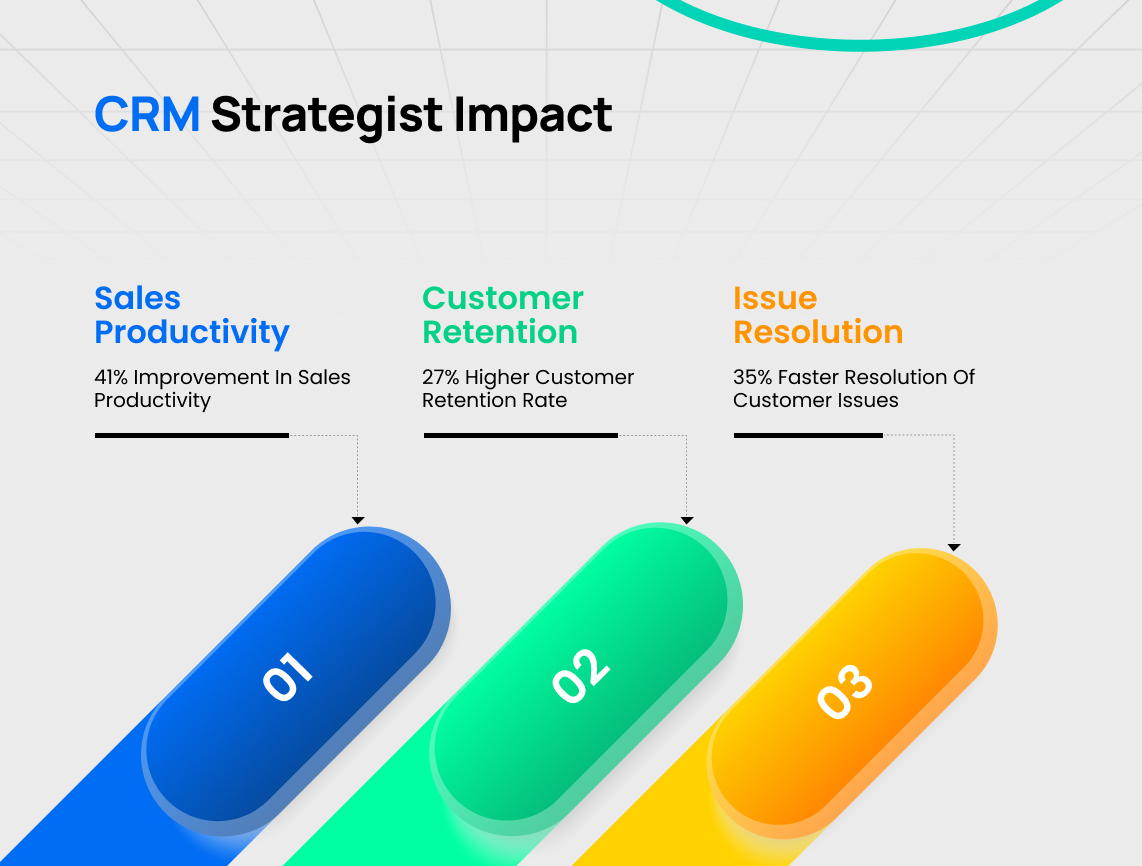
Breaking Down CRM Misconceptions
Traditionally relegated to the status of a sales tool, today’s CRMs are business-wide growth engines. Analytics lets marketing teams optimise their campaigns and find the most profitable customer segments. Support teams use in-context personalisation, very specific product-targeted ads and data-driven sales.
Strategic decisions are driven by real-time performance data from CRM intelligence, are significant to the CEOs.
Product teams dig into customer feedback and usage habits to determine which roadmap features should take priority. And even finance and operations reap the rewards of CRM-driven forecasting and automation of processes. This cross-functional range of impact turns CRMs from just contact apps into organisational nervous systems, moving everything towards centralised customer knowledge and targeted business scaling.
The Competitive Advantage
Companies that treat their CRM as a strategic asset rather than just software see:
Instructions for design time:
- 27% higher customer retention rates (Aberdeen Group)
- 41% improvement in sales productivity (Salesforce)
35% faster resolution of customer issues (Harvard Business Review)
The most successful organisations don’t just integrate a CRM; they incorporate it into the fabric of the company so every team member provides input and reaps the rewards of customer insights.
Your CRM is not only a system of record- it’s a system of engagement, and only when used to its full potential does it really become one of your greatest competitive advantages.
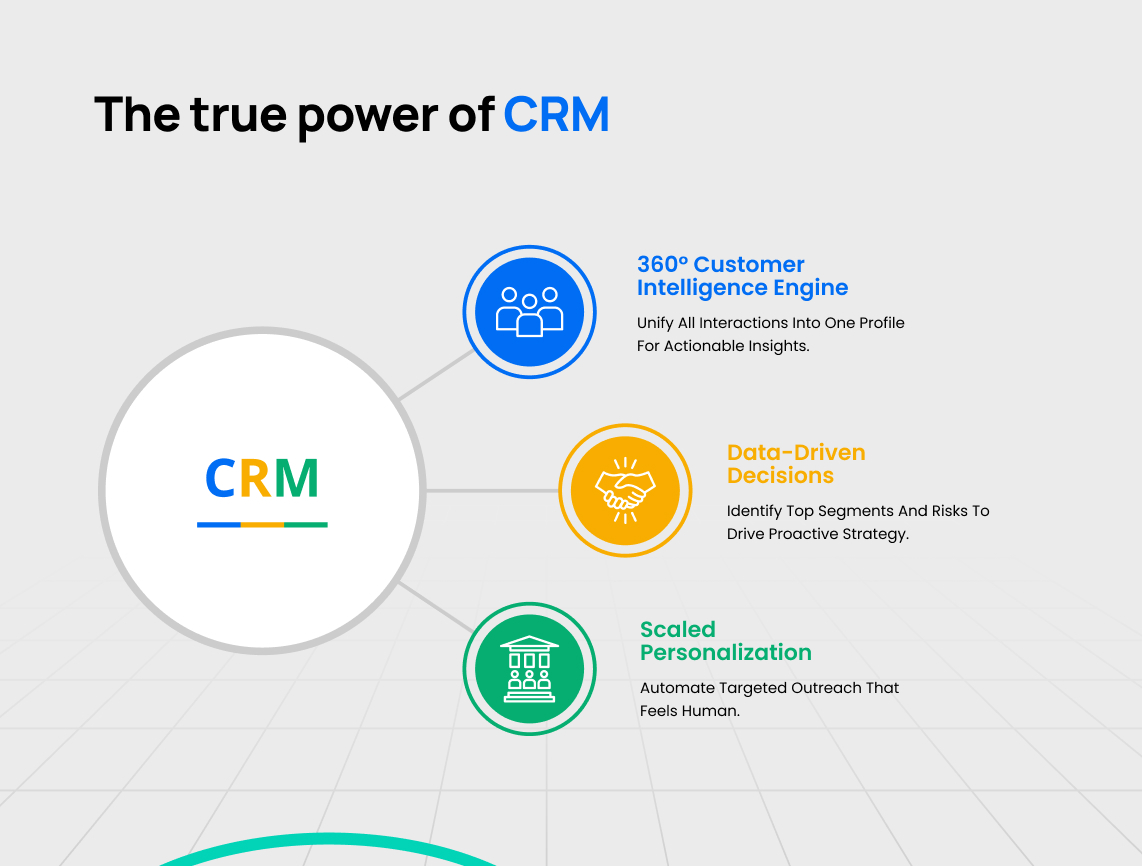
How CRM Transforms IT Service Management
Particularly in an IT services organisation: That’s where the rubber meets the road, and a project manager can have the entire history of a single client in hand in a meeting before a quarterly review. The CRM shows they’ve raised 12 support tickets about cloud migration times, their CTO read three knowledge base articles about Azure optimisation, and their contract renewal date is imminent. This is not data—this is the blueprint for a high-value conversation.
But the most IT providers simply get lost, throttled by reactive firefighting where their CRM Strategy is just a ticket-logging system, not a relationship builder. They’re missing the patterns of which clients to proactively audit in their infrastructure before scaling, or which technical contacts respond well to video demos as opposed to white papers.
We’ve seen IT teams transform when they:
Map the client journey – From first security assessment to ongoing managed services
Select specialised tools – Like integrations between CRM and Jira for technical teams
Implement for adoption – Training engineers to document insights, not just close tickets.
The result? IT is a strategic partner to the business, not just a vendor. One client cut churn by 40% by analysing CRM data to forecast which customers needed pre-emptive system upgrades—before outages happened. That’s an example of a great CRM in the context of IT.
Laying the Right Foundation for Your CRM Journey
Before we go off looking at software demos or comparing features, let’s stop and ask ourselves, what are the problems that we’re really trying to solve? The most successful CRM rollouts start with understanding what your team is looking for to build a better relationship with your customers, not with what an ad salesman says you need right now.
Also, establishing your business challenges, goals and intended outcomes in the beginning ensures that your CRM will support your objectives, and not be the next system that you do not use!
Start with what you already know.
All our online interactions leave breadcrumbs — website visits, support tickets, sales conversations. The opportunity is in filtering that noise, shaping that data and turning it from a tsunami of meaningless mazes into well-defined signals around what your customers really want or need. Ask yourself:
- What stories does our data tell us?
- In what places are we missing the puzzle?
- How would knowing more about our customers change what we do?
The ones that do this well don’t use a CRM so much as craft a dynamic, living system that grows and changes as the business itself grows and changes. And that always begins with asking the right questions before seeking answers in technology.
Putting Your Customer in Sharp Focus
We all talk about “knowing your customer,” but not many businesses actually zoom in on who that is. Those quarterly sales reports give you the “what.” Now let’s find the “who.” Picture your customer’s entire universe: not just the person who signs contracts, but the co-workers who whisper in their ear, the industry blogs they follow, even the competing solutions they’re comparing you to.
The Power of Precision
This is where a lot of teams get it wrong: They try to track everything all at once. You must choose – are you in the business of building relationships with a wide community of fickle individuals (like a coffee shop does) or with a small, focused, multi-person corporation (like a B2B SaaS company)? It’s not just semantics, as it’s the determining factor between whether you’re tracking preferences for individuals or the buying committee within an organisation.
The real test, and the hard work, is asking: What would we stop doing, start doing, or do differently tomorrow if we heard the unfiltered thoughts and reactions of dozens of our customers today? That answer frames your CRM decision of what will come next.
Choosing Your CRM Partner: A Team Sport
With a plan in place, it’s time to get your dream team (IT, Marketing, Sales, and Operations) together to make one of the biggest choices – your CRM platform. Think about this as you would selecting a new office space: You wouldn’t allow one department to rule, as you want everyone to be able to work there comfortably.
Platforms Worth Considering
While you may have heard names like Salesforce, HubSpot, or Sharp AI, keep in mind: the flashiest demo is not always the best fit. We’ve witnessed companies spend months searching for the right solution by comparing features when what they really should have been comparing was which one fit with their must-have workflows.
Implementation Wisdom
- Customise with Care: Mold the software to your business rhythms, not the other way around
- Beware the Flexibility Trap: That 1000-feature system might overwhelm more than empower
- Start Simple: Focus on nailing core functions before exploring every bell and whistle.
The best implementations move at the pace of adoption, not the speed of technology. The “light” initial roll-out of just contact management and pipeline tracking to one customer is now being used by 90% of its team members in weeks, and the company is poised to expand effectively.
Bringing Your CRM to Life
There’s no finish line with implementation — that’s where the real work starts. I like to think of your CRM like you do a new exercise regimen; it’s the act of continually using it and defining how you’re using it that delivers the value, not simply having signed up for the gym membership. Too many businesses treat their CRM like a trophy on a shelf, when it should be the well-worn hammer in everyone’s hands.
Make It a Habit
- Schedule regular “data check-ins” (quarterly for leadership, weekly for frontline teams).
- Treat your first review cycle as version 1.0—expect to refine as you go.
- For nonprofits, build donor touchpoints into your monthly rhythm.
The smartness is in the repetition. With each cycle, you learn something new: Perhaps sales finds that some leads require more follow-up. Maybe marketing knows which campaigns really allow conversion to happen. And just as in any relationship, the more you listen and adjust, the stronger your customer connections will be.
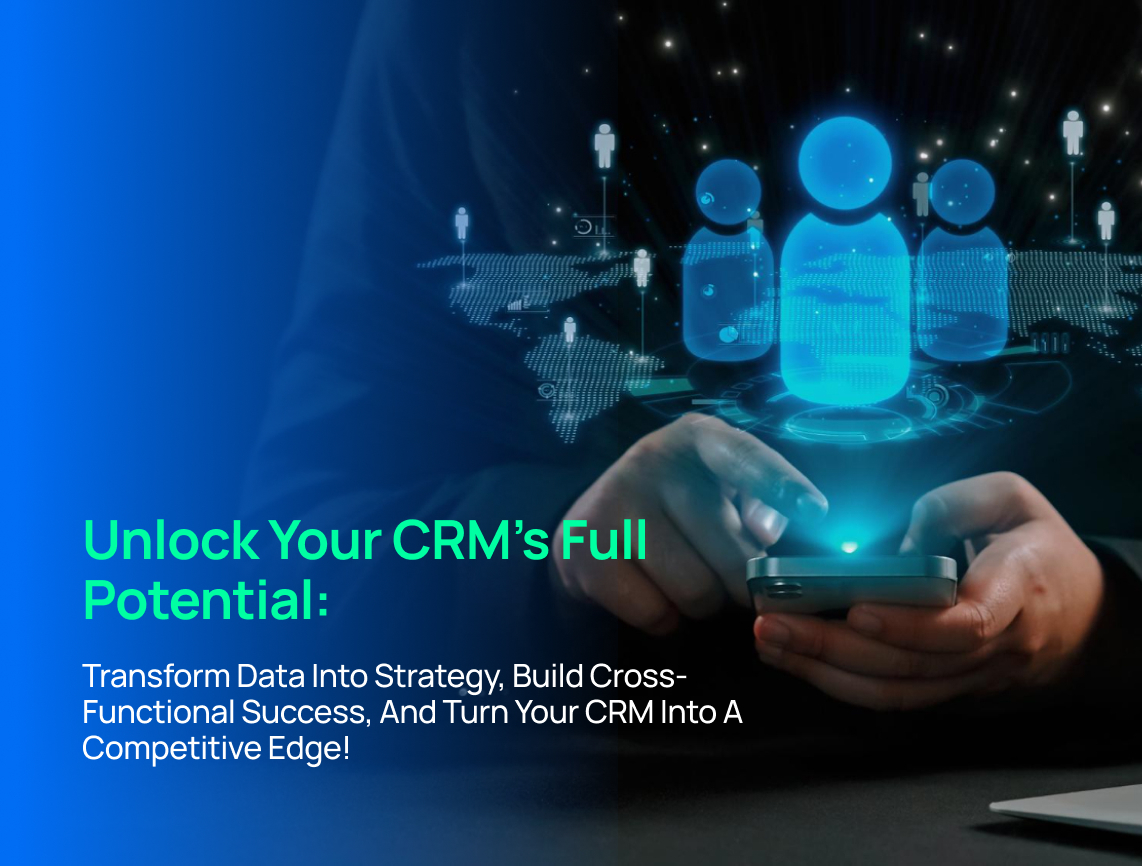
Elevating Your Customer Relationships to the Next Level
The value of your CRM really kicks in when you go from just gathering information to actually having actual discussions with your customers. It’s all about turning numbers and metrics into actionable insight to better connect and grow.
Cutting Through the Digital Clutter
While modern tools give us endless customer data points, the real art lies in:
- Distilling meaningful patterns from the noise
- Connecting the dots between different touchpoints
- Recognising the human story behind every click, call, and purchase
Conclusion- Your CRM Success Roadmap
To make the most of your CRM, map out your entire customer ecosystem so you can see what you’re actually serving. Do a deep dive data audit to filter the signal from the noise, and clearly define if you want to look at users on the individual level or at the level of the entire organisation.
Assemble a team from across functions, from IT to leadership to the front lines, to lead the effort. Choose your platform wisely based on your own individual business requirements, and not the flashiest features. Better yet, make CRM usage part of daily habits and persistence. Regular use will evolve a system of record into a competitive advantage that keeps pace with your business.


